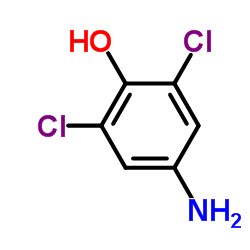Fluorescent materials for pH sensing and imaging based on novel 1,4-diketopyrrolo-[3,4-c]pyrrole dyes†Electronic supplementary information (ESI) available: NMR and MS spectra, further sensor characteristics and sensor long-time performance. See DOI: 10.1039/c3tc31130aClick here for additional data file.
Aigner D, Ungerböck B, Mayr T, Saf R, Klimant I, Borisov SM
Index: J. Mater. Chem. C 1 , 5685-5693, (2013)
Full Text: HTML
Abstract
New optical pH-sensors relying on 1,4-diketopyrrolo-[3,4-c]pyrroles (DPPs) as fluorescent pH-indicators are presented. Different polymer hydrogels are useful as immobilization matrices, achieving excellent sensitivity and good brightness in the resulting sensor. The operational pH can be tuned over a wide range (pH 5-12) by selecting the fine structure of the indicator and the matrix. A ratiometric sensor in the form of nanoparticles is also presented. It is suitable for RGB camera readout, and its practical applicability for fluorescence imaging in microfluidic systems is demonstrated. The indicators are synthesized starting from the commercially available DPP pigments by a straightforward concept employing chlorosulfonation and subsequent reaction with amines. Their sensitivity derives from two distinct mechanisms. At high pH (>9), they exhibit a remarkable alteration of both absorption and fluorescence spectra due to deprotonation of the lactam nitrogen atoms. If a phenolic group is introduced, highly effective fluorescence quenching at near-neutral pH occurs due to photoinduced electron transfer (PET) involving the phenolate form.
Related Compounds
| Structure | Name/CAS No. | Molecular Formula | Articles |
|---|---|---|---|
 |
4-Amino-2,6-dichlorophenol
CAS:5930-28-9 |
C6H5Cl2NO |
|
Characterization of methemoglobin formation induced by 3,5-d...
1997-03-14 [Toxicology 118(1) , 23-36, (1997)] |
|
Theory and practice of enzyme bioaffinity electrodes. Chemic...
2008-06-11 [J. Am. Chem. Soc. 130(23) , 7276-85, (2008)] |
|
Theory and practice of enzyme bioaffinity electrodes. Direct...
2008-06-11 [J. Am. Chem. Soc. 130(23) , 7259-75, (2008)] |
|
In vivo and in vitro 4-amino-2,6-dichlorophenol nephrotoxici...
1994-05-31 [Toxicology 90(1-2) , 115-28, (1994)] |
|
4-Amino-2,6-dichlorophenol nephrotoxicity in the Fischer 344...
1997-11-01 [Toxicol. Appl. Pharmacol. 147(1) , 115-25, (1997)] |